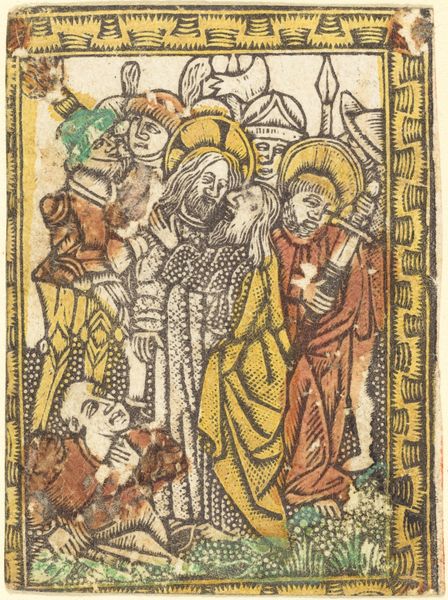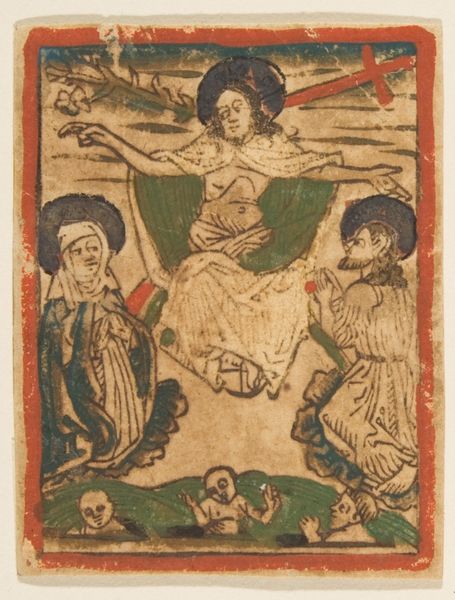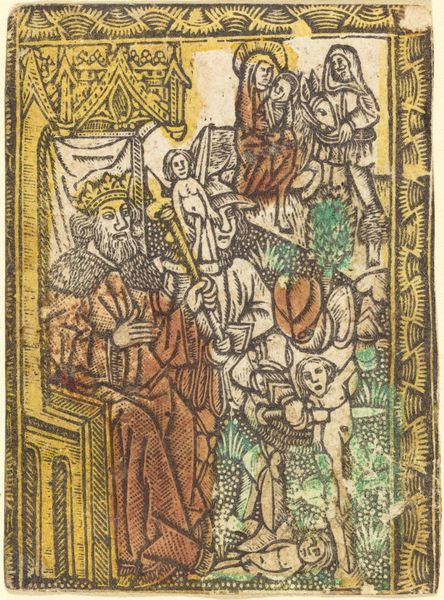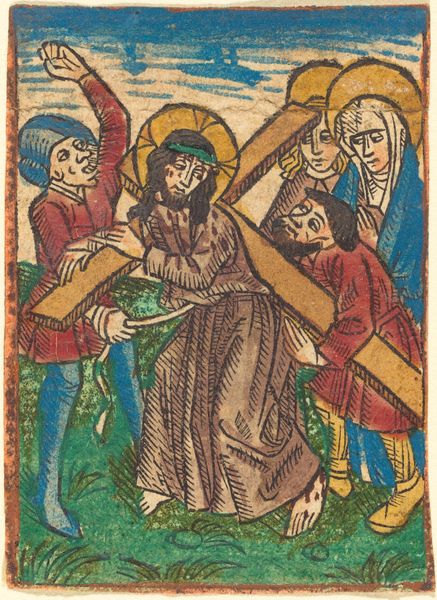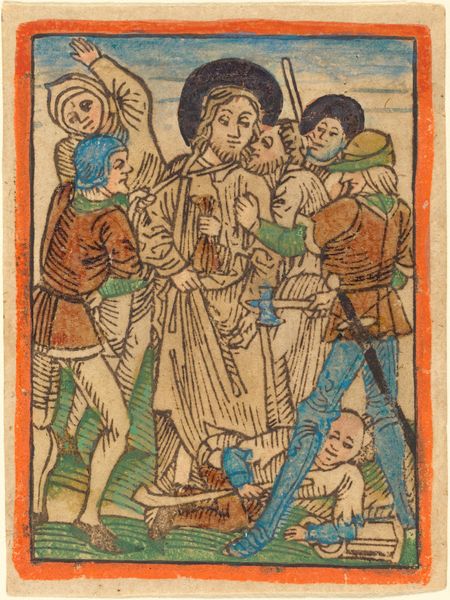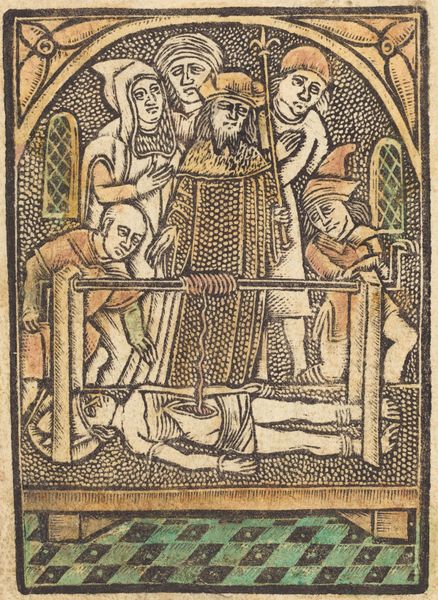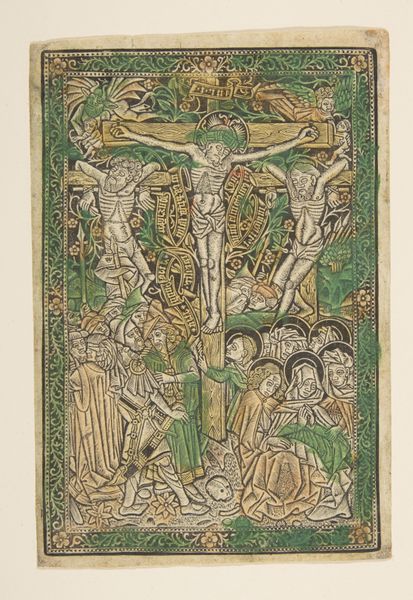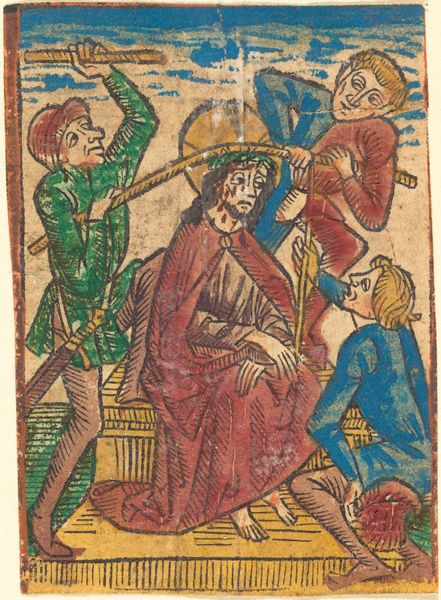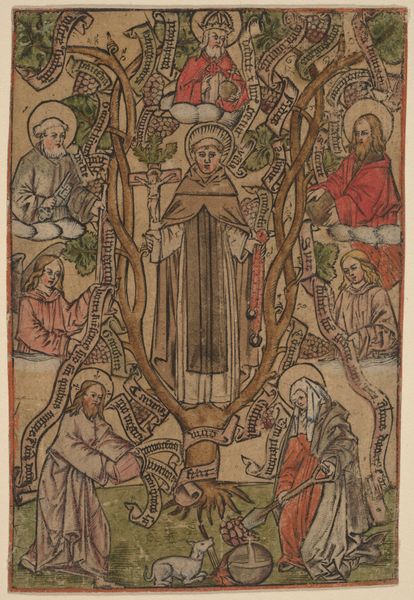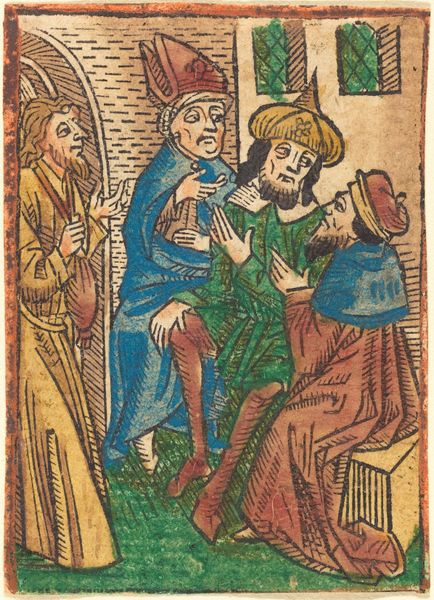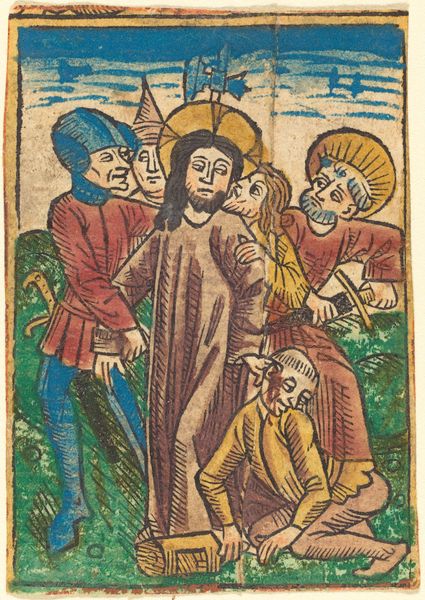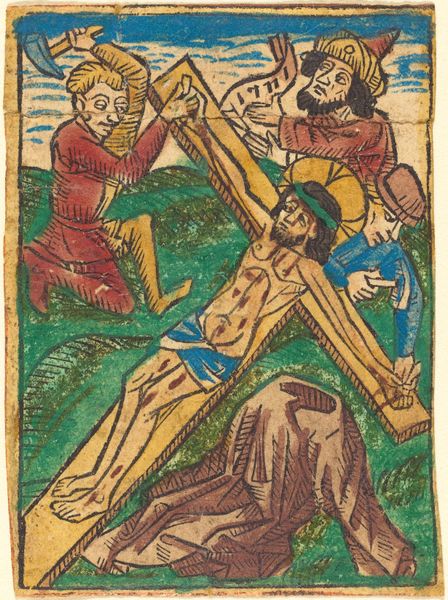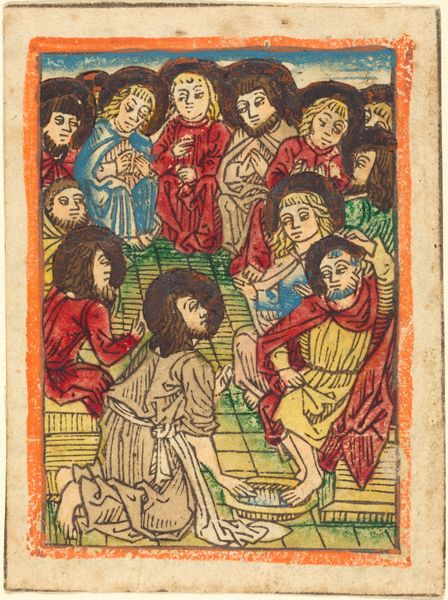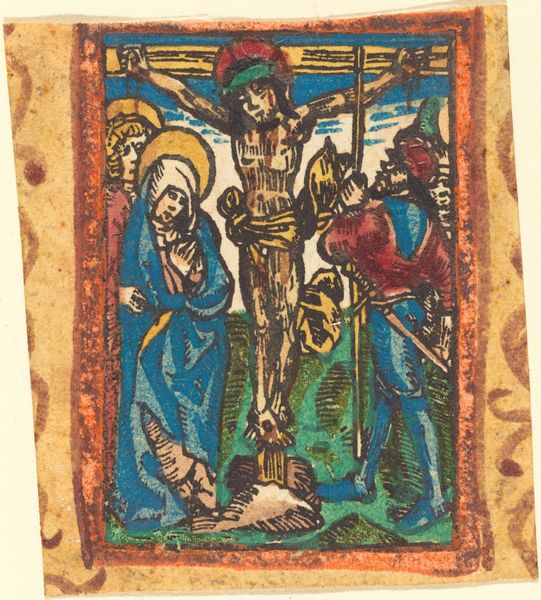
print, woodcut, engraving
#
medieval
#
ink painting
#
pen drawing
# print
#
figuration
#
woodcut
#
line
#
history-painting
#
northern-renaissance
#
engraving
Copyright: National Gallery of Art: CC0 1.0
Curator: This rather striking woodcut engraving, probably printed sometime between 1470 and 1475, is titled "The Last Agony of the Dying Man." It’s attributed to an anonymous artist working during the Northern Renaissance. The details, particularly the devils, leap right out! Editor: "Striking" is putting it mildly! It feels like a fever dream, a cacophony of dread and… what's that word…anticipation of doom. The composition feels utterly divided between earthly torment and divine hope. It's strangely unsettling, yet the artistry in rendering the horror keeps you riveted. Curator: It certainly is. Look closely at the scrolls being brandished. Notice how those spiky, blackletter words, likely exhortations or taunts, practically weaponize language itself, and seem to symbolize the dying man’s psychological battlefield. Editor: Precisely! The scrolls as psychological weights! Then the monstrous figures – grotesque amalgams of human and animal, reptilian and bat-like – swarm in with terrifying intent, reflecting very deep archetypes about our fear of the end. The image clearly uses a vocabulary of dread. But the ascending souls accompanied by angels offer redemption as a beacon of light Curator: Indeed. Medieval and Early Renaissance art often depicted death not as a singular event but as a final spiritual struggle, a moment of intense contest between good and evil. The art emphasizes that. In these depictions the battle isn't merely physical. Editor: I see how this really encapsulates late medieval anxieties. The very linear, almost etched quality gives a chilling directness. It doesn't offer comfort; rather it shows the gauntlet a soul had to run. And look, the man on the cross barely figures, pushed far into the background, almost fading. Is this an emphasis on being left alone as death nears, despite one's faith? Curator: A poignant reading, suggesting the individual's terrifying aloneness facing ultimate questions! I hadn’t considered that particular nuance, focusing more on the theological drama. Editor: And theological drama is surely here, right down to those grimacing little demons yanking the poor dying guy down with his sins! The way faith and fear are visualized here feels intensely personal and resonant to this day. Curator: I completely agree. This print, although old, presents a timeless reflection of humanity's grappling with mortality. The fact it exists through art, lets us also face it. Editor: Exactly! So few other cultural testaments show how each era conceives of dying itself as an ongoing event and how it feels so personally to a suffering human being.
Comments
No comments
Be the first to comment and join the conversation on the ultimate creative platform.
